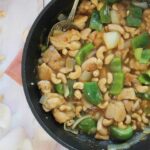Fiber is an essential part of a healthy diet, playing a crucial role in digestion, weight management, and overall well-being. Incorporating fiber-rich foods into your daily meals can lead to significant health benefits. This guide will explore what fiber foods are, their benefits, and how to include them in your diet.
Understanding Fiber and Its Benefits
Dietary fiber, also known as roughage or bulk, includes the parts of plant-based foods that your body can’t digest or absorb. Unlike other food components, such as fats, proteins, or carbohydrates — which your body breaks down and absorbs — fiber passes relatively intact through your stomach, small intestine, and colon and out of your body.
Fiber is generally classified as:
- Soluble fiber: This type dissolves in water to form a gel-like material. It can help lower blood cholesterol and glucose levels. Soluble fiber is found in oats, peas, beans, apples, citrus fruits, carrots, and barley.
- Insoluble fiber: This type promotes the movement of material through your digestive system and increases stool bulk, so it can be of benefit to those who struggle with constipation or irregular stools. Whole-wheat flour, wheat bran, nuts, beans, and vegetables, such as cauliflower, green beans, and potatoes, are good sources of insoluble fiber.
A diet high in dietary fiber has been linked to numerous health benefits, including:
- Improved Bowel Health: Fiber increases the size and weight of your stool and softens it. A bulky stool is easier to pass, decreasing your chance of constipation.
- Weight Management: High-fiber foods tend to be more filling than low-fiber foods, so you’re likely to eat less and stay satisfied longer.
- Blood Sugar Control: Fiber, particularly soluble fiber, can slow the absorption of sugar and help improve blood sugar levels.
- Heart Health: Fiber can help reduce LDL (“bad”) cholesterol levels.
- Reduced Risk of Certain Cancers: Some studies suggest that a high-fiber diet may lower the risk of colorectal cancer.
Recommended Daily Fiber Intake
The amount of fiber you need each day depends on your age, sex, and overall calorie intake. The current dietary guidelines for Americans suggest consuming 14 grams of fiber for every 1,000 calories. This translates to roughly 25 grams of fiber per day for women and 38 grams per day for men. Children aged 12 months through 23 months should aim for 19 grams of fiber a day.
Chart of High-Fiber Foods
Here’s a breakdown of common foods and their approximate fiber content:
Fruits
| Fruits | Serving size (grams) | Total fiber (grams)* |
|---|---|---|
| Raspberries | 1 cup (123) | 8.0 |
| Pear | 1 medium (178) | 5.5 |
| Apple, with skin | 1 medium (182) | 4.5 |
| Banana | 1 medium (118) | 3.0 |
| Orange | 1 medium (140) | 3.0 |
| Strawberries | 1 cup (144) | 3.0 |
Vegetables
| Vegetables | Serving size (grams) | Total fiber (grams)* |
|---|---|---|
| Green peas, boiled | 1 cup (160) | 9.0 |
| Broccoli, boiled | 1 cup chopped (156) | 5.0 |
| Turnip greens, boiled | 1 cup (144) | 5.0 |
| Brussels sprouts, boiled | 1 cup (156) | 4.5 |
| Potato, with skin, baked | 1 medium (173) | 4.0 |
| Sweet corn, boiled | 1 cup (157) | 4.0 |
| Cauliflower, raw | 1 cup chopped (107) | 2.0 |
| Carrot, raw | 1 medium (61) | 1.5 |
Grains
| Grains | Serving size (grams) | Total fiber (grams)* |
|---|---|---|
| Spaghetti, whole-wheat, cooked | 1 cup (151) | 6.0 |
| Barley, pearled, cooked | 1 cup (157) | 6.0 |
| Bran flakes | 3/4 cup (30) | 5.5 |
| Quinoa, cooked | 1 cup (185) | 5.0 |
| Oat bran muffin | 1 medium (113) | 5.0 |
| Oatmeal, instant, cooked | 1 cup (234) | 4.0 |
| Popcorn, air-popped | 3 cups (24) | 3.5 |
| Brown rice, cooked | 1 cup (195) | 3.5 |
| Bread, whole-wheat | 1 slice (32) | 2.0 |
| Bread, rye | 1 slice (32) | 2.0 |
Legumes, Nuts, and Seeds
| Legumes, nuts and seeds | Serving size (grams) | Total fiber (grams)* |
|---|---|---|
| Split peas, boiled | 1 cup (196) | 16.0 |
| Lentils, boiled | 1 cup (198) | 15.5 |
| Black beans, boiled | 1 cup (172) | 15.0 |
| Cannellini, Navy, Great Northern beans, canned | 1 cup (180) | 13.0 |
| Chia seeds | 1 ounce (28.35) | 10.0 |
| Almonds | 1 ounce (28.35) | 3.5 |
| Pistachios | 1 ounce (28.35) | 3.0 |
| Sunflower kernels | 1/4 cup (32) | 3.0 |
*Rounded to the nearest 0.5 gram. Source: USDA National Nutrient Database for Standard Reference, Legacy Release.
Tips for Increasing Fiber Intake
- Read Labels: When buying packaged foods, check the Nutrition Facts label for fiber content.
- Start Slowly: Adding too much fiber too quickly can lead to gas, bloating, and discomfort. Increase your intake gradually.
- Stay Hydrated: Drink plenty of water as you increase your fiber intake to help prevent constipation.
- Choose Whole Grains: Opt for whole-wheat bread, brown rice, and oatmeal instead of refined grains.
- Eat Fruits and Vegetables: Aim for a variety of fruits and vegetables, especially those with edible skins and seeds.
- Add Legumes to Your Diet: Incorporate beans, lentils, and peas into soups, salads, and main dishes.
- Snack Smart: Choose high-fiber snacks like nuts, seeds, and fresh fruits.
Creating Fiber-Rich Meals
Combining different high-fiber foods can help you easily reach your daily fiber goals. For instance, adding 1 cup of raspberries to 1 cup of cooked oatmeal with half a serving of almonds can provide around 13.5 grams of fiber. A bean and vegetable salad can contribute about 11 grams of fiber. These combinations can significantly boost your fiber intake and support overall health.
Conclusion
Understanding “What Is Fiber Foods” and incorporating them into your diet is a significant step towards improving your health. By choosing a variety of fruits, vegetables, grains, legumes, nuts, and seeds, you can ensure you’re getting enough fiber to support healthy digestion, weight management, and overall well-being. Remember to increase your fiber intake gradually and drink plenty of water to maximize the benefits and minimize any potential discomfort. Make informed choices and enjoy the delicious world of high-fiber foods!

